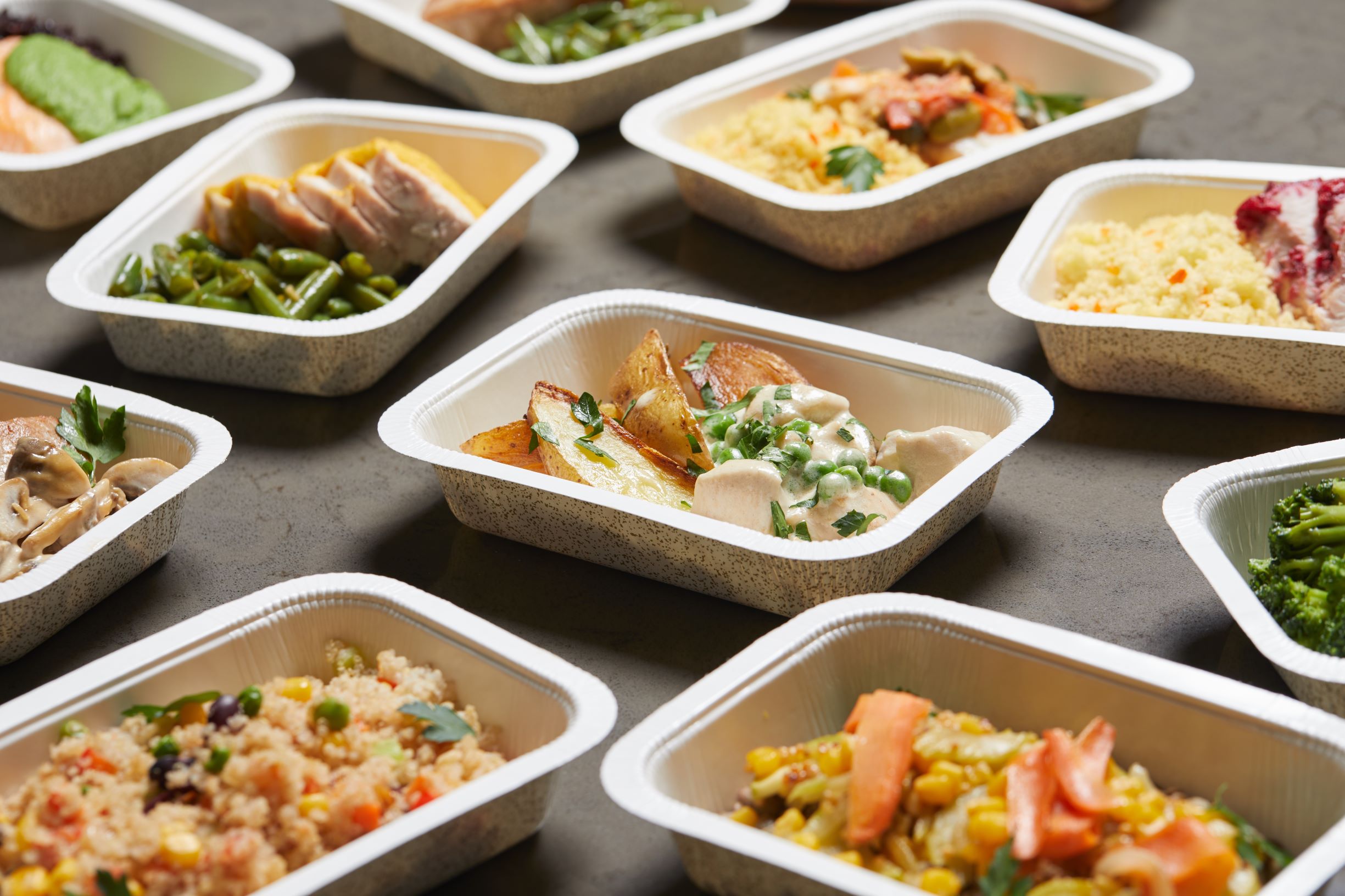Can you catch COVID-19 from food?
There's currently no evidence of COVID-19 being transmitted through food.

The thought may have crossed your mind as you navigate grocery store aisles or order takeout in the midst of a pandemic: Can you catch the new coronavirus from food?
Experts say there's currently no evidence of the new coronavirus disease, COVID-19, being transmitted through food.
"We don't really have any evidence that food or food packaging is a source for getting sick" from COVID-19, said Benjamin Chapman, a professor and food safety specialist at North Carolina State University.
Chapman stressed that there's a lot we don't know about COVID-19 and the virus that causes it, SARS-CoV-2. Our understanding about the spread of the disease, and the risk food poses, could change as more information becomes available.
But as far as we know, the disease appears to be spread mainly from person-to-person through virus particles that are spread when someone coughs or sneezes, according to the Centers for Disease Control and Prevention (CDC). While COVID-19 can theoretically be transmitted by touching a contaminated surface and then touching your nose, mouth or eyes, that's not thought to be its primary mode of transmission, according to the CDC.
Why food is low risk
There are also several factors that could make transmission of SARS-CoV-2 through food less likely, even if the virus is present on food or a food worker catches it.
First, the food safety measures that are already in place to prevent foodborne illness — such as frequent hand-washing, cleaning of surfaces and utensils, and cooking food to the right temperature — would also reduce the transmission of any virus particles through food.
Sign up for the Live Science daily newsletter now
Get the world’s most fascinating discoveries delivered straight to your inbox.
"One of the benefits we have in the food world is we're already thinking of those things a lot — we're constantly trying to stay away from transmission of foodborne pathogens in normal, regular times," Chapman told Live Science.
Another factor is the biology of the virus. It cannot survive for weeks at a time on surfaces — a characteristic of other foodborne viruses such as norovirus, according to the Centers for Science in the Public Interest. (Preliminary studies have found the new coronavirus may last a few hours to a few days on certain surfaces.) And unlike bacteria, viruses cannot grow inside food, so the amount of virus in the food would be expected to dwindle with time, rather than grow.
Also, in theory, this type of virus should not survive well in the stomach, which is very acidic. "That's good news around food," Chapman said.
Still, the extent to which people can become infected by touching their mouths, or eating contaminated food, is unclear.
"It's not that it's not possible" for people to become infected with COVID-19 through food, Chapman said."There's always this possibility. But I want to make the best risk management decision based on the best science and evidence, and we just don't have any evidence in that area" right now, Chapman said.
Tips for groceries and takeout
Although the risk of catching COVID-19 from food is likely low, there are some steps you can take to further reduce your risk. Here are some tips. (Chapman and his colleagues have also put together some COVID-19 resources regarding food safety for consumers and the food service industry.)
Store-bought food:
- It's always a good idea — even when there's no pandemic — to rinse fresh fruit and vegetables with water to remove dirt, debris and pesticides, and reduce levels of foodborne germs.
- There's no need to wash food with soap. "Soap is for hands, not for food," Chapman said.
- If you are concerned about food packaging, you can wash your hands after handling the packaging.
- If you are concerned about your food, you can cook it at 149 degrees Fahrenheit (65 degrees Celsius) for 3 minutes, which will significantly reduce levels of any virus particles, Chapman said.
Takeout:
- Food that comes from restaurants is "really, really low risk" because food industry workers already have a heightened awareness about food safety. To further reduce the risk, Chapman encourages people to wash their hands after handling food packaging or takeout bags.
It's also important for employers in the food industry to have strong employee health policies. Food workers should stay home if they start to feel symptoms, even if they haven't been diagnosed with COVID-19, he said.
- The 9 deadliest viruses on Earth
- 11 ways processed food is different from real food
- 20 of the worst epidemics and pandemics in history
Originally published on Live Science.
OFFER: Save at least 53% with our latest magazine deal!
With impressive cutaway illustrations that show how things function, and mindblowing photography of the world’s most inspiring spectacles, How It Works represents the pinnacle of engaging, factual fun for a mainstream audience keen to keep up with the latest tech and the most impressive phenomena on the planet and beyond. Written and presented in a style that makes even the most complex subjects interesting and easy to understand, How It Works is enjoyed by readers of all ages.

Rachael is a Live Science contributor, and was a former channel editor and senior writer for Live Science between 2010 and 2022. She has a master's degree in journalism from New York University's Science, Health and Environmental Reporting Program. She also holds a B.S. in molecular biology and an M.S. in biology from the University of California, San Diego. Her work has appeared in Scienceline, The Washington Post and Scientific American.










